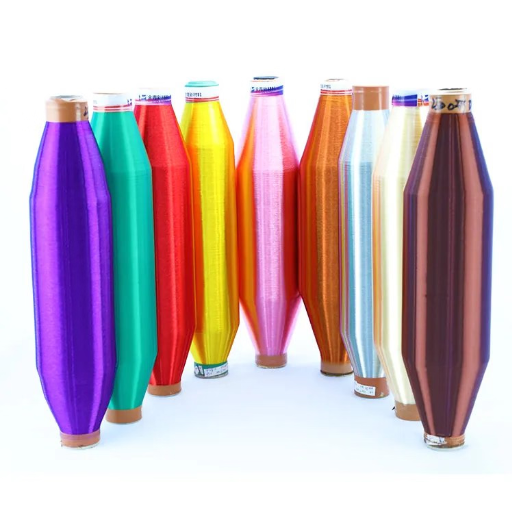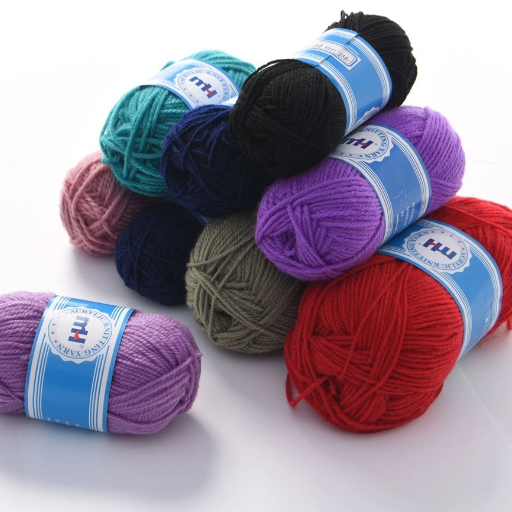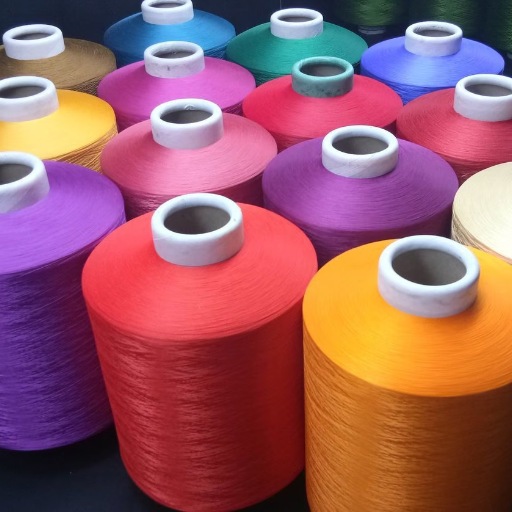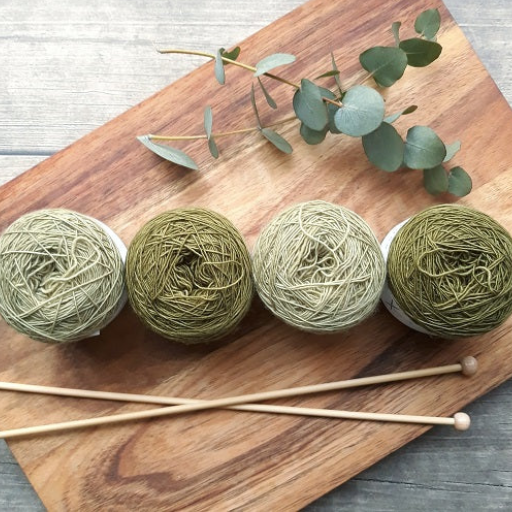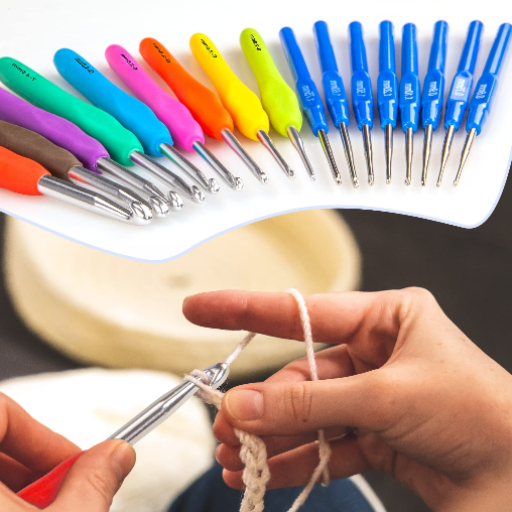Acrylic yarn is a popular choice for many hobbyists and professional crafters due to its affordability, availability, and versatility. However, one common challenge with acrylic yarn is its tendency to feel stiff or scratchy, which can affect the comfort and overall quality of your projects. The good news is that there are several proven methods to soften the acrylic yarn, ensuring that your creations are not only beautiful but also pleasant to touch.
This guide will walk you through the science behind why acrylic yarn can feel rough to the touch, the materials you’ll need to soften it effectively, and a step-by-step breakdown of different softening techniques. We will also explore considerations for specific projects and examine how this process can enhance the durability and quality of your finished works. Whether you’re a seasoned crafter or just starting on your crocheting or knitting journey, these tips will help you elevate your crafting experience to the next level.
What is Acrylic Yarn and Why Does It Feel Scratchy?

Acrylic yarn is often an extremely affordable option compared to others because it is made from polyacrylonitrile and is classified as a synthetic fiber. Moreover, Acrylic is widely popular among crafters due to its availability in multiple colors and weights. However, the rough texture of acrylic yarn stems primarily from the manufacturing process itself and the skeletal structure of synthetic fibers which lack the natural waxes and oils inherent in wool or cotton. Such structure results in low pliability of the fiber, especially when untreated.
Understanding Acrylic Yarn
Acrylic yarn is a synthetic fiber made from polymers, specifically polyacrylonitrile, and is designed to mimic the qualities of natural fibers like wool. One of its key advantages is its affordability, making it accessible for crafting projects that require large quantities of yarn. Additionally, acrylic yarn is highly durable, light-resistant, and can retain its color vibrancy even after multiple washes, making it appealing for long-term use. It is also hypoallergenic, an important consideration for individuals with sensitivities to natural fibers like wool.
However, there are some drawbacks to consider. Acrylic yarn is less breathable compared to natural fibers, which can make it less comfortable in warmer climates. Its synthetic nature also means it is less environmentally friendly, as the production of acrylic involves petroleum-based processes that have a significant environmental impact. Furthermore, its texture can feel coarse or scratchy to the skin, although post-treatment methods, such as washing with a fabric softener, can mitigate this issue.
By understanding these factors, crafters can make more informed decisions when selecting acrylic yarn for their projects, balancing cost, durability, and comfort to meet specific needs.
Why Acrylic Yarn Feels Stiff and Scratchy
The roughness and stiffness of acrylic yarn are a result of the synthetic nature and manufacturing processes involved. Acrylic does not possess the softness of natural fibers like cotton or wool, rather it is produced from polymer polyacrylonitrile which is obtained from a petroleum base. The treatment and finishing processes that undergo heat-setting may also contribute to the yarn’s stiffness. Such chemical procedures serve to improve durability and appearance but texture-wise they are not pleasing. As time goes by, the fabric softener used during washing can break down portions of fiber, which then makes the fabric more comfortable for wear in projects or garments.
Comparison with Natural Fibers Like Wool
Acrylic has set itself apart from natural materials like wool in many aspects of its properties, use, and performance. Unlike synthetic fibers, wool which comes from animals like sheep, is a protein fiber that contains great thermal insulation, moisture-wicking characteristics, and elasticity. If you ask me, it suits clothing extremely well due to its breathability and ability to retain warmth across a range of climates. Now let’s consider acrylic: as it is built to imitate wool, its strength lies within its petroleum origins. Unfortunately, acrylic fabrics tend to do poorly in moisture control, and breathability due to its structure which is hydrophobic and begins to trap heat and sweat.
It is clear that acrylic is lightweight, does not get damaged by moths, and is less expensive than wool. This makes it a more suitable option for those on a budget. Despite that, wool is more sustainable due to its natural ease of biodegradability compared to acrylic. Lastly, wool is easier to have crimp lanolin, the ultimate texture is soft and odor-resistant; something acrylic doesn’t offer. These differences serve to reinforce the fact that choosing between synthetic and natural fabrics depends heavily upon the user’s needs.
How Can I Soften Acrylic Yarn Before Using It?

To soften the acrylic yarn, begin by creating a swatch or completing your project. Then, immerse the piece in lukewarm water with a small amount of fabric softener or hair conditioner. Gently agitate the yarn to ensure it absorbs the conditioner evenly. After soaking for 15-30 minutes, rinse thoroughly with clean water to remove any residue. Next, lay the yarn flat on a clean towel to air-dry, avoiding direct sunlight or heat sources. This process relaxes the synthetic fibers, making the yarn softer and more comfortable to work with or wear.
Methods to Soften Acrylic Yarn
- Steam Blocking
Steam blocking is an effective technique to soften acrylic yarn by gently applying heat through steam while shaping the yarn. Using a steam iron, hover it over the yarn without direct contact, allowing the steam to penetrate the fibers. This loosens the synthetic structure, making the yarn more flexible and softer. Caution is advised to avoid overheating, as excessive heat can damage the acrylic material.
- Vinegar Treatment
Adding white vinegar to the final rinse during the washing process can also soften acrylic yarn. Mix one part white vinegar with four parts water, submerge the yarn, and allow it to soak for 10-15 minutes. Rinse thoroughly with clean water to neutralize the pH. This method helps further relax the fibers and removes any chemical smells from the yarn.
- Tumbler Dryer with Damp Cloth
A quick and easy method involves placing the yarn in a tumble dryer set to low or no heat, alongside a damp cloth or towel. Running the dryer for 10-15 minutes (without causing shrinkage) agitates the fibers, breaking them down slightly to achieve a softer texture. Exercise care to monitor the drying process closely to avoid overheating.
These methods serve as additional approaches to enhance the texture and usability of acrylic yarn, complementing the soaking technique described earlier.
Using Fabric Softener and Other Household Items
Fabric softener can significantly improve the softness and pliability of acrylic yarn. To use this method, combine a small amount of fabric softener with a basin of warm water, ensuring it is thoroughly diluted to prevent residue. Submerge the yarn or finished project in the solution and allow it to soak for 30 minutes to an hour. After soaking, gently rinse the yarn with cool water to remove excess softener, being careful not to disturb the fibers excessively.
Alternatively, household items like vinegar can be used as a natural softening agent. Mix one cup of white vinegar with warm water and soak the yarn similarly, then rinse thoroughly. This method not only softens the yarn but can also help break down any built-up residue.
For additional softening, you can also consider combining methods, such as soaking the yarn in a softener solution followed by a tumble-dry process using low or no heat. Regardless of the chosen approach, ensure all materials are rinsed clean and dried properly to maintain the integrity of the acrylic yarn. These techniques provide practical, easily accessible options to further improve the texture and usability of the material.
Steps to Soften Yarn Before Using
- Wash the Yarn: Begin by washing the acrylic yarn in warm, soapy water using a mild detergent. Submerge the yarn fully and gently agitate it to remove any manufacturing residue. Avoid harsh scrubbing to prevent damage to the fibers. Rinse thoroughly to ensure no soap remains.
- Use Fabric Softener: After washing, soak the yarn in a mixture of warm water and fabric softener for at least 30 minutes. The softener helps relax the fibers, making the yarn feel smoother and more pliable. Ensure the solution is well-mixed for even softening.
- Rinse and Dry: Remove the yarn from the softener solution and rinse it under cool water until it feels clean and no residue is left. Squeeze out excess water carefully without wringing, and allow the yarn to air dry on a clean towel in a flat position. This prevents stretching or distortion of the fibers.
- Tumble Dry (Optional): For additional softening, place the fully dried yarn in the dryer with a dryer sheet, using the no-heat or low-heat setting. This method helps eliminate stiffness, leaving the yarn softer to the touch.
- Steam Blocking: If further softening is desired, steam blocking is an effective technique. Use a handheld steamer or steam iron on a low setting, and gently steam the yarn while shaping it. Ensure not to apply direct heat or excessive pressure to avoid melting the acrylic fibers.
By following these steps, the acrylic yarn will become softer and more comfortable to work with, ensuring optimal results for your crafting projects.
What Are the Best Ways to Soften Yarn for Crocheting and Knitting?

To achieve softer yarn for crocheting and knitting, here are some of the most effective methods:
- Washing and Conditioning: Wash the yarn gently using cool water and a mild detergent or fabric softener. Rinse thoroughly and allow it to air dry. This method reduces stiffness in the fibers.
- Vinegar Rinse: Add a small amount of white vinegar to the final rinse while washing the yarn. The vinegar helps to relax the fibers and enhances softness.
- Steam Blocking: Use a low-heat steam setting to gently apply steam to the yarn while reshaping it. This process loosens the fibers without damaging the material.
- Reworking the Yarn: Simply working the yarn through your fingers or using it actively in a project can naturally soften its texture over time through repeated manipulation.
These techniques are reliable and accessible, ensuring that your yarn becomes increasingly suitable for comfortable and high-quality crafting.
Using Hair Conditioner and Fabric Softener
This method is particularly effective for softening rough or stiff yarn. Start by creating a solution by mixing a small amount of hair conditioner or fabric softener with warm water in a large basin or sink. Submerge the yarn completely and allow it to soak for approximately 30 minutes. Agitate the solution gently during soaking to ensure even absorption. Afterward, carefully rinse the yarn with clean, lukewarm water until no residue remains. Gently press out excess water without wringing, and reshape the yarn as it dries flat on a towel. This process works by coating the fibers with conditioning agents, reducing stiffness and improving the overall pliability of the yarn.
Soaking Techniques with Warm and Cool Water
Soaking yarn in warm and cool water depends on the type of fiber and the outcome. Animal-based fibers like wool and alpaca, require the soaking water to be between 100-110°F (38-43°C) since it relaxes the fiber, helping it relax without damaging it. While soaking the yarn, remember to add a bit of detergent or fiber wash. To avoid any felting issues, add the yarn without sudden temp changes.
When soaking plant based fibers such as cotton, or silk, using cool water is preferable due to its ability to preserve the fiber’s integrity while simultaneously preventing dye bleeding. Water temp should be set below 75°F (24°C). Fabric softener can also be added when needed to increase the fiber’s softness while conditioning agents can also be used for increased comfort.
No matter the water temperature, make sure the yarn stays suspended for 20-30 minutes so the solution soaks the fibers fully. After an adequate time, remove the yarn and rinse it as previously stated. Proper rinsing is extremely important.
How to Use Steam to Soften Yarn
Steam softening is an efficient process to relax and rejuvenate yarn fibers, particularly for those that feel stiff or coarse. To begin, prepare your steamer or an iron with a steam function. Stretch the yarn across a flat, heat-resistant surface, ensuring it is free from tangles. Place a light, damp cloth over the yarn to act as a barrier, protecting it from direct heat.
Hold the steaming device a few inches above the yarn and move it slowly and evenly across its surface. Avoid pressing directly to prevent damage or warping of the fibers. The heat and moisture from the steam penetrate the yarn, loosening it and enhancing its softness without over-soaking. Repeat this process systematically, working in small sections for consistent results.
Once steamed, allow the yarn to cool completely in its stretched position; this helps to set the fibers in their new, softer state. This process is particularly effective for natural fibers like wool and alpaca but should be performed with caution for synthetic blends to avoid deformation. Always test a small section first to ensure compatibility with the selected steaming method.
How Do I Use Fabric Softener to Soften Yarn?

Using fabric softener to soften yarn is a straightforward process but requires care to prevent damage to the fibers. Begin by filling a container with lukewarm water and adding a small amount of fabric softener, following the product’s dilution guidelines. Submerge the yarn completely and allow it to soak for 15 to 30 minutes. After soaking, rinse the yarn thoroughly with clean water to remove any excess softener. Gently squeeze out excess water without wringing, then lay the yarn flat on a towel to air dry. This method works well for most types of yarn but should be tested on a small section first to ensure the desired results.
Steps for Using Fabric Softener
- Can fabric softener be used on all types of yarn?
No, fabric softener should not be used on delicate or specialty yarns such as wool or cashmere without testing a small section first. These fibers may react differently and can lose their natural texture or elasticity.
- How much fabric softener should be used?
Follow the dilution guidelines provided by the manufacturer, typically 1-2 capfuls of fabric softener in a gallon of water. Overuse can lead to residue buildup and may affect the softness of the yarn.
- What is the proper soaking time?
Yarn should be submerged for 15 to 30 minutes, depending on its thickness and material. Avoid over-soaking, as it may weaken certain fibers.
- Is rinsing necessary after soaking?
Yes, thoroughly rinse the yarn with clean water to remove excess softener and prevent residue buildup, ensuring the fibers remain smooth and manageable.
- What is the best drying method?
Gently squeeze out excess water without twisting the yarn, then lay it flat on a clean towel in a well-ventilated area. Avoid hanging the yarn to dry, as this may distort its shape or stretch the fibers.
Rinsing and Drying Techniques
To ensure optimal yarn care, proper rinsing and drying methods are essential. After soaking, it is critical to rinse the yarn thoroughly using lukewarm water to eliminate any remaining softener or cleaning agents. This step prevents residue buildup, which could compromise the texture or long-term durability of the fibers.
For drying, gently press the yarn between your hands or a clean towel to remove excess water without twisting, as twisting can damage the fibers. Lay the yarn flat on a dry, absorbent surface such as a towel, reshaping it as necessary. Ensure the drying area is well-ventilated to accelerate the drying process and minimize any risk of mildew. Avoid hanging the yarn or exposing it to direct heat sources, such as radiators or sunlight, as these factors could lead to uneven drying, distortion, or fiber damage.
What Are Alternative Methods to Soften Acrylic Yarn?

There are several effective methods to soften acrylic yarn, each suited to different needs and resources. One straightforward approach is washing the yarn or finished project with a fabric conditioner, which helps relax the fibers. Adding a small amount of white vinegar during the rinse cycle can further enhance softness by neutralizing residue from the manufacturing process. Another method involves soaking the yarn in lukewarm water with a gentle detergent, followed by air-drying it carefully. For quicker results, steam blocking the yarn using a steam iron at a safe distance can loosen and soften the fibers efficiently. Each of these methods should be tested on a small swatch to ensure compatibility with the specific yarn type.
Using White Vinegar and Other Natural Softeners
Yarn can be effectively softened using white vinegar which is a helpful ingredient. Soak the fibers in a mixture of one cup of white vinegar and a gallon of lukewarm water in a tub. The vinegar will soak for 15 to 30 minutes, and afterward, the vinegar scents will be eliminated by rinsing the yarn with clean running water. Follow this step by rubbing natural oils like lanolin and coconut oil into the yarn, but be careful not to overdo it since it can induce greasiness. When combined with water, baking soda can serve as a natural softener since it aids in loosening stubborn fibers. Before applying the methods mentioned for other yarn types, first test them out with a sample to help achieve the best result.
Dryer Sheets and Other Hacks
Dryer sheets serve as an excellent option to soften yarn fibers, courtesy of their ability to improve the general texture of materials, as well as static buildup. All interesting approaches aside, simply wrapping the yarn around a dryer sheet before putting it in an airtight bag for about 24-48 hours usually does the job. The chemicals relax the fibers, which is quite effective. If you would like something a bit more direct, try putting the knitted or crocheted items in the dryer with a dryer sheet and running it on low or no heat. That’s sure to do the trick and improve the softness of the material, but do be mindful of the heat to avoid damaging the item.
Some more unconventional hacks can be employed; steaming the yarn comes in handy when trying to loosen tight fibers that are otherwise difficult to work with. To do this, you will need a garment steamer or a pot of boiling water. Freezing the yarn overnight is also a good way to make the material more flexible since the cold does help relax those stiff, brittle fibers. As is the case with many techniques, moderation is key, so be careful as to how these will affect the overall fabric of the yarn.
Letting Yarn Air Dry vs. Using a Dryer
The method for drying yarn, either air drying or using a dryer, solely depends on the yarn’s fiber drape and what is intended to be achieved. The method that is most gentle drying is air drying as this tends to be less damaging to the fibers as it cuts down on the chances of distortion, shrinking, or damage. Air drying is great for natural and delicate fibers like alpaca or wool. For air drying, place the yarn flat on a towel in a ventilated area to keep its form while avoiding tangling.
The method of drying using a dryer tends to be quicker than air drying but needs care to not damage the fabric. Dryers are best for synthetic fiber like acrylic or polyester, as what is normally referred to as shrinking can easily be avoided. However, it is best to place the yarn in a mesh bag put it on low heat tumble dry for best results to not have the yarn get tangled, or worse, damaged. To bear in mind, agitation and heat from a dryer can significantly cause weakening or felting in most natural fibers which makes this method generally the least preferred. Trying out both techniques may be beneficial on a small thread to find out what works best.
References
Frequently Asked Questions (FAQ)
Q: What is the best way to soften acrylic yarn?
A: To soften the acrylic yarn, you can use a method involving warm water and liquid fabric softener. Let the skein soak in this mixture for about 30 minutes, then rinse thoroughly with cool water. Gently squeeze out any excess water and let it air dry.
Q: Can vinegar be used to soften scratchy acrylic yarn?
A: Yes, vinegar can also be used to soften the yarn. Add a cup of vinegar to a basin of warm water and let the yarn soak for about 20 minutes. Rinse thoroughly and let it dry flat to achieve a much softer texture.
Q: How can I make my crochet project softer after it’s finished?
A: After completing your crochet project, you can wash it in a washing machine using a gentle cycle with a liquid fabric softener. After washing, gently squeeze out excess water and let it air dry to maintain the drape of your finished project.
Q: Is acrylic yarn easy to care for?
A: Yes, acrylic yarn is a versatile and synthetic fiber that is easy to care for. It can usually be machine-washed and dried, making it a convenient option for many knitting and crochet projects.
Q: What type of yarn is considered higher quality compared to acrylic yarn?
A: Higher-quality yarns are typically natural fibers like merino wool, cashmere, or silk. These types of yarns are generally softer and have a better drape compared to acrylic yarn, which is known for its durability and affordability.
Q: Why is my skein of acrylic yarn so itchy?
A: Acrylic yarn can sometimes feel itchy because it is a synthetic fiber. Using methods to soften the yarn, such as soaking in warm water with fabric softener or vinegar, can help alleviate this itchiness.
Q: Can I use a video tutorial to learn how to soften acrylic yarn?
A: Yes, video tutorials can be very helpful in visually demonstrating the process of softening acrylic yarn. Watching a video can provide step-by-step guidance and tips to ensure your yarn becomes softer and more comfortable to use.
Q: Should I join a Facebook group to learn more about working with acrylic yarn?
A: Joining a Facebook group can be a great way to connect with other knitters and crocheters who use acrylic yarn. You can share tips, ask questions, and learn new techniques to improve your craft.
Q: How do I ensure my finished project made with acrylic yarn dries completely?
A: After washing, gently squeeze out excess water from the yarn, then lay your project flat to dry. Ensure it is placed in a well-ventilated area to let it air dry completely, which will help maintain its softness and shape.








